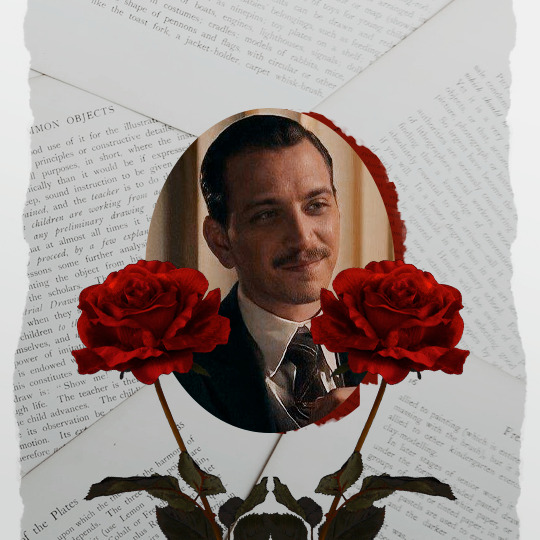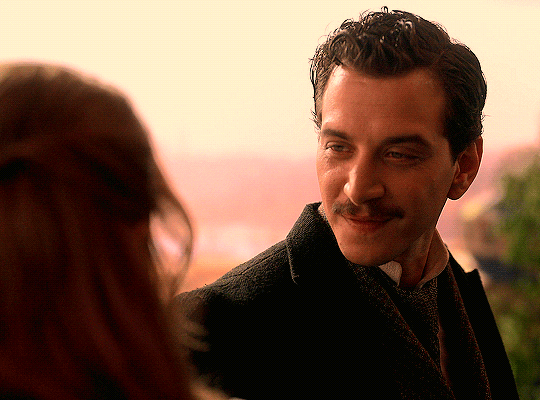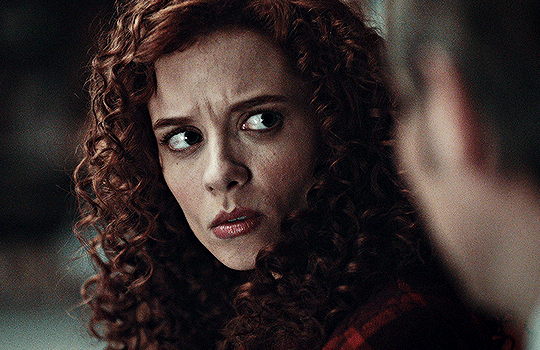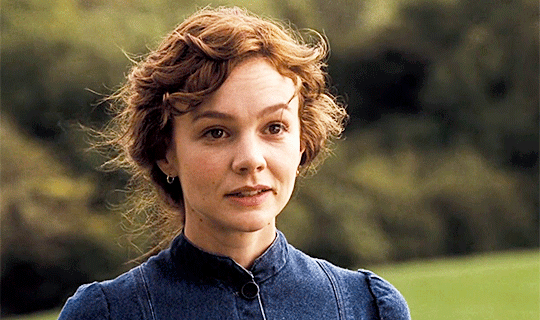#avery family: dark past poor reputation
Explore tagged Tumblr posts
Text

character profile
► basics:
Full name: Melvyn "Melv" Enfield
Meaning of name: Gentle lord or polished chief, Sword friend, Smooth brow.
Nickname: Melv (people know him as Melv Enfield rather than Melvyn.)
Pronouns: He/him
Sexual Orientation: Straight
Nationality: English
Birth date: January 26th, 1886
Zodiac sign: Capricorn
Those born on January 26 are dynamic, dramatic and commanding. Their determination and unshakable confidence in life gives them the potential to reach their goals. They command an air of authority and always like to have the last word. January 26 individuals are great motivators and excellent organizers. Age: 28 when the war starts
► Physical appearance:
Faceclaim: Selahattin Paşalı Height: 185cm Eye colour: Green Hair colour: Dark brown

► Personality:
Positive traits: serious, patient, ambitious, clever, brave, motivated, responsible
Negative traits: unmoved, prudent, strict, nitpicky, can come across somewhat cold
Personality type: INFJ
Character’s greatest joy in life: Odessa and her happiness, his children
Fears: Kit getting hurt or dying, failure
Priorities: Odessa, Kit, his children, his work (but Kit, Odessa and the twins go above)
Character’s soft spot: Odessa, Kit, his children
Is this soft spot obvious to others? No
Greatest vulnerability or weakness: Melv wants to make rational decisions but usually ends up making them with his heart instead which can lead into him getting in trouble.
Biggest regret: Not making a move on Odessa before she ended up marrying Kit, letting Kit run away from home.
Secrets of the character: He is in love with his brother’s wife Odessa Avery.
Does anyone else know? Eventually everyone as he ends up marrying her.
Drives and motivations: His career and reputation, happiness of his family
► Past
Hometown: Doncaster, South Yorkshire, England
Type of childhood: Melv was always responsible compared to his younger brother Kit. Because of his wizard status, he had more privileges than Kit did. Melv thought it was alright for him to have these privileges as he was raised to see himself above Kit who was a squib. His mother married a wizard called Thomas Brynn who he got along with fine with.
Religion: Not religious
Dream job: Obliviator
► Present
Occupation: Obliviator for the British Ministry of Magic.
► Magical info
Blood Status: Unknown (he never knew his real father, but his mother is a witch.)
Education: Hogwarts Hogwarts house: Gryffindor Wand: Fir wood with a unicorn hair core, 14 ½ and unbending flexibility There is no doubt that this wood, coming as it did from the most resilient of trees, produced wands that demanded staying power and strength of purpose in their true owners, and that they were poor tools in the hands of the changeable and indecisive. Fir wands were particularly suited to Transfiguration, and favoured owners of focused, strong-minded and, occasionally, intimidating demeanour. Patronus: Rottweiler This is a calm yet confident dog that allows its environment to influence it. People with this Patronus are hard workers and protectors. With a Rottweiler Patronus, you will always be protected from Dementors. Patronus Memory: Odessa smiling at him Boggart: Kit being shot Specialized/Favourite Spells: Memory spells Favourite subject in school: Charms
► Family Mother: Face claim: Julia Roberts

Relationship with them: Melv has always been close with his mother who takes great pride on her older son. Later she doesn’t approve Melv’s relationship with Odessa Avery and him raising his brothers children as his own. The two become more distant.
Stepfather: Thomas Brynn Face claim: - Relationship with them: Thomas and Melv got along well and Melv didn’t know want to admit about the mistreatment of his younger brother that Thomas was responsible of. He later cut all ties with the man.
Brother: Kit Enfield Face claim: Boran Kuzum

Relationship with them: Kit and Melv were always very different. Melv was responsible and serious. He was patient and liked spending time alone while Kit was loud and had a hard time focusing on anything. They got even more distant while Melv was away from home after going to Hogwarts. He didn’t have the knowledge of everything that was happening back at home. He always assumed Kit was just being dramatic. After Kit ran away from home, he was mad and thought that Kit was breaking their mother’s heart. He didn’t see his little brother’s side of things. When the war started Melv was worried about Kit. He kept up with news about it and tried to be on loop on what was happening. During the war Ares gave his gun for Kit to make sure he’d be safe. Eventually Kit got caught using it and Melv was sent to wipe his memories since Ares’s Presence in the war was meant to be a secret. Kit begged his brother to let him keep his memories of Ares and he agreed to it and lied to the ministry. When he learned about Kit’s marriage, he was not supportive. He knew it was a bad decision that would end with Odessa getting hurt. Their relationship didn’t get any better after that. It didn’t help that Melv had secret feelings for his wife. Melv later on regretted his views of the time when Kit was young. He was sad of not making things right with his brother while he was still alive. Kit died without the two of them ever fully making up.
Children: Ottilie & Oaklan Enfield Face claims: Zoey Deutch, Dylan Arnold


Relationship to them: After Kit died during the first world war, Melv raised his children as his own and they had a good relationship.
► Love interests
Mysterie Charmsworth Faceclaim: Lara Jean Chorostecki

Relationship to them: Mystie had a crush on Melv during their Hogwarts years and the two dated for a while after graduating. Mystie was very intense and different from Melv and he was the one to end the relationship which Mystie didn't take it well. After ending the relationship Melv tended to avoid situations where he would have to face Mystie again.
Odessa Avery @cursed-herbalist Faceclaim: Carey Mulligan

Relationship to them:
Melv has has been in love with Odessa since their childhood. Unfortunately, she only seemed to have eyes for his younger brother. Despite their differences and frequent arguing, they made a good team. The two got closer after Kit's death as Melv offered her support when she most needed it and it quickly resulted in growing feelings and happy marriage.
►Enemies Renfield “Ren” Godfrey Face claim: Tom Austen

Relationship to them: Melv hated the man who killed his brother and swore to have revenge against him. With the help of Lunas Avery @cursed-herbalist he eventually managed to destroy one of Ren’s horcruxes thinking they had defeated him for good. *more info to be added*
► Relationships with others
Friends: Willard Hartford, Lunas Avery & Ione Avery @cursed-herbalist Leda Gaunt @gaygryffindorgal eventually *Up for more friends!* Rivals: Kit Enfield, Ares Gaunt @gaygryffindorgal
Person character goes to for advice: His mother Person character feels responsible for or takes care of: Kit, Odessa, his children
Person character feels shy or awkward around: Mystie, Odessa
Person character openly admires: Archer Evermonde ► Habits Spending habits: Stirct with money Smokes: Yes a lot Drinks: Sometimes Other drugs: No What does he do too much of? think about Odessa when he shouldn't, sacrifice his own goals for Kit's sake
What does he do too little of? Speak out on his opinions
Extremely skilled at: memory spells, school
Extremely unskilled at: singing
►Traits
How he feels about himself: Melv is a very confident man who knows how to use his smarts. He puts much pressure on himself but knows his own limits.
How do other people perceive him: Sometimes a little entitled and a know it all but most often as a serious well educated handsome and charismatic man.
Style:

#melv enfield#character profile mine#hp ww1 era#hp ww1 verse#melv has arrived in all his glory#this is a shorter version of my normal profile but i feel like i still wouldn't call it a miniprofile..
8 notes
·
View notes
Photo

Dark past, poor reputation
AVERY FAMILY:
A família Avery é uma das sagradas 28 segundo o Diretório Puro-Sangue de 1930. Todos os seus antepassados foram estudantes de Hogwarts, selecionados para a casa Sonserina e eventualmente se tornaram seguidores do Lord das Trevas. Avery I fora um dos seus primeiros seguidores, sendo um dos amigos de infância de Tom Ridle. Seguindo-se pelos seus filhos, Nero e Julius Avery, que também deveriam ter se tornado Comensais da Morte. Embora uma parte do legado de Avery I tenha sido frustrado pelo desaparecimento de Nero após a movimentação para a 2º Guerra Bruxa, Julius tornara-se fiel Comensal da Morte e houve boatos de que morrera na Motim na Copa Mundial de Quadribol.
Após a queda do Lord das Trevas seus seguidores foram capturados e levados a julgamento com sentença de prisão perpétua em Azkaban. Não se teve notícias de Nero até 2003. No dia em que teoricamente deveria ter feito seu juramento, Nero Avery fugira para a Bulgária, mas não podendo permanecer no mesmo local por muito tempo, aparatava para o mais distante que conseguia, até que fora parar em Atenas, onde conhecera Nice Daskalakis, bruxa grega pela qual se apaixonou verdadeiramente e tiveram seu primeiro e único herdeiro: Niklaus Avery Daskalakis.
Para preservar a identidade de Niklaus, os pais decidiram enviá-lo para Durmstrang, onde fora a escola de sua mãe no passado, usando apenas seu segundo sobrenome. Somente em 2003 fora descoberto o passado obscuro que circundava a vida do garoto após a morte de Nice por ex-comensais da morte que estavam a procura do Avery perdido.
NIKLAUS AVERY:
Em Beauxbatons Niklaus evita apresentar-se pelo nome de família, embora todos de Durmstrang já conheçam o seu passado familiar. Em casa a sua identidade nunca fora escondida de si, e sempre encontrava conflitos de personalidade pelas características genéticas que trazia consigo e as influências externas.
Após a morte da mãe o pai entrara em uma depressão profunda. Niklaus se via mais perdido do que jamais estivera pois acreditava que havia sido o causador da morte de sua mãe após ter feito uma barganha com bruxos traficantes para assustar o pai depois que ambos tiveram uma briga.
Sem a mãe para equilibrar o temperamento desequilibrado, tanto por fatores internos como por estímulos externos, o garoto se vê constantemente à beira de um precipício, oscilando entre ser alguém bom que faz coisas ruins, ou ser alguém ruim que realiza bons feitos.
Niklaus escolhe se manter cego diante dos segredos da família Avery, evitando ao máximo procurar saber mais sobre seu passado, sendo a sua zona de conforto as histórias da família grega Daskalakis e seus pequenos feitos principalmente no Quadribol e nas Artes.
@tripontos
#tri: pontos#avery family: dark past poor reputation#headcanon#conheçam um pouquinho mais do surtadinho <333
17 notes
·
View notes
Text
Northamptonshire Witch Trials - tales of fear and executions from the county's dark past

Accused witches were subjected to the ordeal of water, it was believed that God's judgement would have shown if the person was innocent. (Image: Photo by Fototeca Gilardi/Getty Images)
Tales of witches have been told for centuries and are still around today, many including nods to black cats, cauldrons and broomsticks.
Some of these stories are world-famous, like the Salem witch trials in the USA, which saw more than 200 people accused of witchcraft.
But today we bring you the stories of the witches who were born and executed in Northamptonshire.
The trials, although not as famous as other witch-hunts across the UK, may have actually been a catalyst to the famous Pendle witch trials that were held just a year later.
They were held at Guilsborough, which is an old place, with the church mentioned in the Doomesday book, but not one that seems immediately unusual.
That is until you begin to look around the village. The Witch and Sow pub, the symbol of three witches riding a pig that hangs in the village hall and on the "welcome to" sign that depicts the same image of a-typical witches flying on a pig.
Guilsborough was the home of two witches, that were the most famous out of five executed for their crimes in 1611.
The history of witches and witch trials in the area is one more extensive and interesting than many know.
From murdered children, family feuds, injured cattle and bewitchment of all kinds, the Northamptonshire witches may have never confessed but the accusations against them were damning.
The start of a nation-wide fear

Witches beaten in front of King James during the Berwick Witch Trials (Image: Wikimedia)
King James VI of Scotland became the first monarch to unite the kingdoms of England and Scotland in 1603 when he inherited the throne from his Aunt, Queen Elizabeth I, the last Tudor.
Stemming from his own paranoia and fear, James bought about decades of death, fear and fascination.
Witchcraft. The King was seemingly-obsessed with witches and the need to rid society of them and their enchantments.
So obsessed that he wrote the infamous "Daemonologie", published in 1597.
In the book that is little over 80 pages long, James described witches as "detestable slaves of the Devil".
The purpose of Daemonologie wasn’t only to convince the doubters of the existence of witchcraft, but it was also to inspire those who persecuted witches to do so with new vigor and determination - James described witchcraft as “high treason against God”.

Daemonologie written by King James I
The science of demons noted in this work were not new findings or fresh information, but because it was written by a King it became enormously influential.
Daemonologie was used in towns and villages across the UK to hunt witches, in a way that swept fear across the nation as women, men and children were accused in their hundreds of thousands.
It even had more far-reaching influences, widely thought to have inspired William Shakespeare's Macbeth, with the three witches using their power to lead the protagonist down a path of turmoil that ends in his death.
"Of poore parentage and poorer education"
Early Modern England was a misogynistic time and women were not seen as people in their own right, but as a fundamental role in the family.
Women were not seen as individuals but as a vital part of the family unit - a unit that was on the verge of being destroyed.
A woman was expect to birth children, be a mother and a loyal wife, be a cleaner and stay in the stereotypical role of the "woman of the house".
In the 16th and 17th Century the family unit was seen as what was necessary to keep the community strong.
Small villages would have relied on these traits, seeing the social structure of the family community as a potential weapon against dangers from afar.
Witches destroyed the idea of a strong family unit, with a wholesome mother figure. Whilst in Europe and Scotland, witches were blamed for large disasters and grand acts of violence and death like storms or earthquakes, English witchcraft was allegedly the source of smaller issues.

Artist Ulrich Molitoris' depiction of Scottish witches "bringing down the rain" (Image: Wikimedia)
Unexplained deaths and sicknesses, injury to livestock, begging and petty crimes and acts of healing were all believed to be aspects of English witchcraft.
The public and authorities feared these crimes because of the dangers the consequences of their acts posed to the family unit.
The family unit is imperative to the story of Agnes Browne, the most famous of the witches executed at the Northamptonshire witch trials.
She was the witch, who with her daughter, bewitched and tormented another family unit.
Agnes Browne was a poor woman, who was described - in the pamphlet that announced her execution - as a woman from "poore (sic) parentage and poorer education". This was common in the women who were accused of witchcraft, poor woman, vagrants, beggars who came from poor families, with little to no education.
She was the mother of Joan Vaughan (sometimes written as Ioane Vaughan), who was accused with her mother of bewitching Mistress Belcher and Master Avery, who were also from Guilsborough, and bewitching an unnamed child to death.
After a feud between the two families, in which Belcher struck Joan and "reproached her unseemly behaviour". The mother and daughter were said to have caused Belcher to feel "an intolerable pain and to become disfigured".
It was believed that the remedy for those effected by witchcraft, was to scratch a witch. With this Avery, Belcher's brother, attempted to lure the duo out of their home but was stopped by an "invisible force" outside the property.
Allegedly, Avery then suffered the same fate as his sister and became extremely unwell and tormented. This lasted until Agnes and Joan were apprehended and arrested in Northampton by Sir William Saunders.
While Brown and Vaughan were imprisoned, Belcher and Avery were permitted to scratch them, ending their torments. Brown was indicted for bewitching Belcher and Avery, and for causing the death of an unnamed child, and though she pleaded her innocence, was sentenced to execution.
The most famous aspect of their apprehension, was that two weeks prior Agnes was supposedly seen riding a sow with two other witches to visit an old witch names Mother Rhoades - who had died before they three arrived, and called out in her last cast that her three friends would meet her again "within the next month".
Both Agnes and Joan were two of the five witches who were executed on 22 July 1611 at the assizes in Northampton.
The Bill family witches who float
Of the five witches executed on 22 July, Arthur Bill was one of them. A poor man and a son of two witches from the town of Raunds he had been suspected of being a witch for many years.
The town gave him the reputation of being associated with evil activities - and then the body of Martha Aspine was found.
When the body of the woman was found brutally bewitched and murdered, he was almost immediately accused of being implicated in her death.
Arthur, Mother Bill and Father Bill were rumored to be seen floating on water, and so were accused of bewitching the woman.
The family were apprehended and Bill, along with his parents, was bound thumb to toe and tossed into water.
Accused witches were subjected to the ordeal of water. It was believed that God's judgement would have shown if the person was innocent.

An individual who was innocent would drown during the test and would be acquitted of the crime, and someone who was guilty of being a witch would float.
Each member of the Bill family floated to the surface, which is said to confirm their guilt.
Arthur was sent to the Northampton Gaol (jail) by Sir Gilbert Pickering. There, he and his mother allegedly bewitched a round ball into his father's throat to prevent him from confessing.
His father nevertheless became a witness against him.
His mother, in fear of being hanged, slit her own throat. Arthur adamantly pleaded his innocence, yet he was still found guilty.
While he was imprisoned, many tried to bring him back into the fold of the Church and pray for his confession and contrition, but he asserted his innocence up until the moment he was executed.
A man, cattle and the Castle
Born of "mean parents" and described as licentious, malicious, envious, cruel, monstrous and hideous, and a slave to the passions of the flesh, Mary Barber was portrayed as a caricature witch.
Typically women who were accused of being witches were described as hideous, with hair on their lip and a witches mark - a third nipple.
Mary was accused of bewitching a man to death and causing harm to a variety of cattle, for which she was committed to Northampton Gaol.
After her arrest Mary and the other four accused witches were brought from the common jail in Northampton to Northampton Castle, where the Assises were held.

Postern gate of Northampton Castle. This is all that remains of the demolished castle where the witch trials were held. (Image: Wikimedia)
There was no penal system in the 17th century, so instead of each being tried individually, the Assises were used to deal with a large quantity of crimes in one go.
As a numerous amount of cases were dealt with at the same time, it was common for grand places to be chosen to hold the court - such as Northampton Castle.
The 1612 pamphlet that detailed the accusations, trial and executions of the Northamptonshire witches talked of the witches being put to trial for their crimes "by trial of the Country" - the publication went on to say that the witches were "found guilty and deserved death by the verdict".
Barber was ultimately found guilty and, though she maintained her innocence to the end, was executed for these crimes alongside the others on 22 July 1611.
None of the witches confessed to their crimes, so "like birds of a feather, they all held and hanged together for company, at Abington gallowes hard by Northampton".
"As innocent as the rest"
The final of the five executed witches, is Hellen Jenkenson.
A woman from Thrapston who lived an "evil life", she was suspected of her crimes before her apprehension.
Hellen was accused of bewitching cattle and other "mischiefes" and similarly to her fellow accused witches, she was described as being poor, wretched scorned and forsaken of the world.
Hellen was apprehended by Sir Thomas Brooke for bewitching a child to death.
Prior to her apprehension, Jenkenson had been searched by Mistress Moulsho and a jury of women who found the witch's marks on her body.

The next day, Moulsho's maid finds that the laundry, and especially Moulsho's smock, has been covered in images of toads, snakes and other ugly creatures in retribution.
This was reported and Moulsho went straight to Hellen's home and threatened to "scratch her eyes out" unless she returned the linen to its former state - on her return, the linen was white once again.
Hellen pleaded not guilty to bewitching the child and maintained her innocence until her execution.
She was, however, found guilty of killing the child by bewitchment and was subsequently hanged with the other four witches.
Hellen denied the accusations against her to the last moment, insisting "she was to die an innocent, I think as innocent as the rest."
https://www.northantslive.news/news/history/northamptonshire-witch-trials-tales-fear-4238259
0 notes